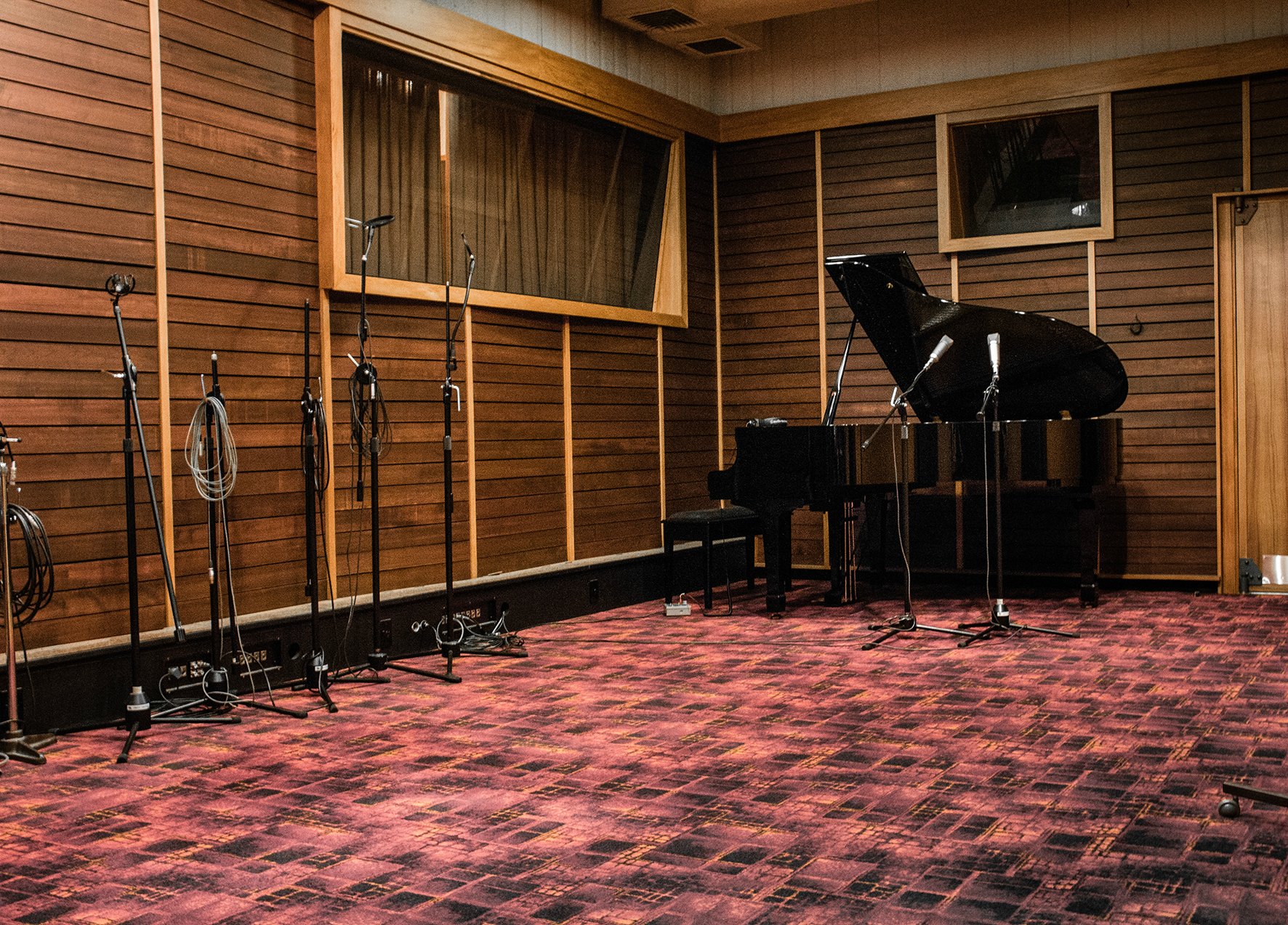
Of all the studios at Stebbing Recording Centre, it’s almost always the main Studio One that’s heralded for its illustrious rock ‘n’ roll history and iconic retro decor. Yet its cosier neighbour Studio Two also plays an important role within the recording complex. It’s here that engineer Steve McGough records and mixes audio for radio and TV commercials, amongst the many other services the room caters to. For over 30 years Steve has worked with a variety of agencies, producers and voiceovers to create some of New Zealand’s most memorable radio and TV ads. Here he talks about how recording for TV and radio works and offers some handy tips.
Recording a voiceover for radio or TV requires some thought, planning and a good knowledge of engineering techniques to create a great-sounding ad.
How does it work? A company or brand may enlist their advertising agency to create a script – or in some cases they may write it themselves. Armed with the finished script they’ll make contact with the studio to book a recording session.
Big agencies in particular will work with their own producer who usually selects voiceover (VO) talent prior to the session. Some may entrust this to the studio engineer. The latter happens quite a lot in my case. Sometimes I even write, voice and produce the ad myself.
Prior to recording, I will select a suitable microphone, depending on the voice requirements and situation. If the client requires an ‘outdoor’ sound for instance, I’ll use a more focused microphone so that the ‘room space’ is less apparent. For a ‘kitchen situation’, ‘classroom’ or ‘preacher’ style VO an orchestral microphone is more suitable, and can be placed up to 2 metres away from the VO in a large room to create a spatial sound.
Between recording takes the producer gives production notes to all involved to ensure the perfect result as they see it. Often we’ll edit parts of various takes together, taking the best read pieces to achieve the sound we want – and I’ll edit out breaths and ‘pops’ where possible.
Agency creatives will often attend a booking as well as clients, so everybody is there to approve the final result, and also approve script changes on the spot if the script is too long and needs shortening.
Sound effects (SFX) are added as required, along with perhaps edited music or a jingle. Once all parties are happy, the mixing process begins. At this point I’ll ensure that the audio mix is loud and clear for broadcast. Finished radio ads are emailed out as mp3 files, but for TV, the finished audio is processed to modern broadcasting levels and sent to the production company involved to combine with the pictures before going to station.
1. Check that the script fits the duration of your ad. It's amazing how many people forget to do this prior to the recording session. TV and radio stations work to strict, automated schedules and the end of your ad will be clipped off if it is too long. Get someone to time your script as you read it out loud in a quiet room – they’ll notice if you’re rushing while you probably won’t. If you think your duration may still be slightly over prior to recording, it’s good to have a clear idea of what can be removed if necessary. Different voices can read more quickly than others and remain reasonably natural, so this can be taken into account also if you know your voice talent. Often clients will change or add words after the writer has timed and finished, so if possible it is wise to re-time the script to ensure that it still fits, and recheck grammar and tense.
2. Getting the right VO talent can be crucial. Think carefully about your product and target market and what kind of voice they’ll respond positively too. If you’re having trouble, speak to a talent agent or engineer you trust. Be open to their suggestions – agents in particular will be very familiar with their talents’ capabilities. If you need a voice for an ad targeting a particular ethnicity, it’s important to put even greater care and consideration into the talent you choose. A native speaker is preferable even if the ad is being voiced in English, as they will sound authentic to their audience. And if pronunciation is tricky, make sure you know 100% how those words are supposed to be said before the booking.
3. Another helpful thing to remember is SFX. It’s a great advantage to an engineer if you can give them some indication of what SFX are required before the session. If they have time they may be able to think creatively about how to achieve the sound you’re after. One of the less conventional briefs I’ve received is to create the sound of “a full yoghurt pot flying through the air and landing on the ground”. To create the landing I found a SFX clip of tomatoes being dropped, which I was able manipulate backwards. I then added a ‘squelch’ SFX and created the sound of plastic hitting tar with foil. Another time I had to emulate “a Smurf talking underwater with his mouth full”. For this one we filled the agreeable VO talent’s mouth with shredded paper. He yelled the script and then we added electronic phasing and bubble sounds to finish it off. The arrival of a 3 metre lettuce from outer space by a supermarket was another interesting brief. If there’s time we can be really creative with SFX, much like the foley artists who create sounds for movies!
For any booking or general enquiries regarding studio VOs, jingles and recording for ad spots, please contact us.